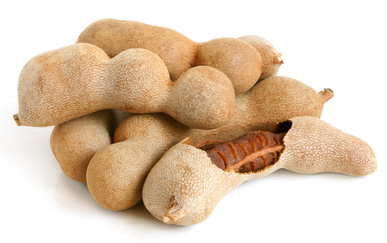
Health Benefits:
Aids in digestion
Aids in weight loss
Fights free radicals
Helps cure dysentary
Lowers blood pressure
May reduce cholesterol
May regulate heart rate
Relieves constipation
Nutrition:
Serving size: 1 fruit; Calories: 5; Fat: 0g; Cholesterol: 0mg; Sodium: 1mg; Carbs: 1.2g; Fiber: .1g; Sugars: 1.2g; Protein: 0.1g; Potassium: 0%DV; Vitamin A: 0%DV; Vitamin C: 0%DV; Calcium: 0%DV; Iron: 0%DV
Did You Know?
- You don't have to harvest tamarinds right away. Tamarinds may be left on the tree for as long as 6 months after maturity so that the moisture content will be reduced to 20% or lower
Ways to Eat:
- Raw
- Powered (added to meats or rice)
- As a drink
Farming Trivia:
- The tamarind is native to tropical Africa and grows wild throughout the Sudan
- Sometime during the sixteenth century, tarmarind was introduced into America and today is widely grown in Mexico
- Tamarind ade has long been a popular drink in the Tropics and it is now bottled in carbonated form in Guatemala, Mexico, Puerto Rico and elsewhere
Note: Always consult a physician for any specific health questions and concerns. Some of this information may be subject to change should there be any new findings from Federal Health Administration (FHA), Food & Drug Administration (FDA), American Medical Association (AMA), American Cancer Society (ACS), and / or other leading food, nutrition and medical advisors.

